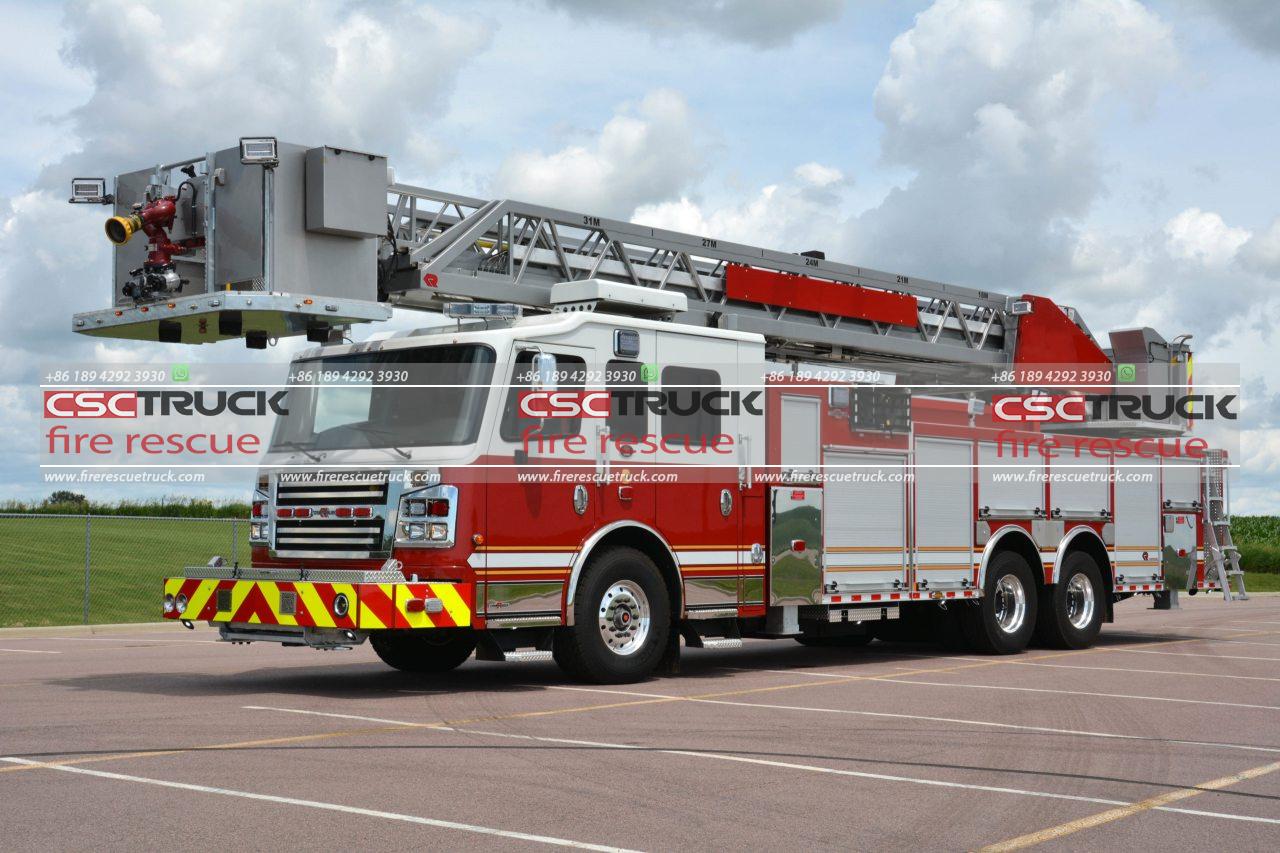Fires in high-rise buildings present unique challenges for firefighters. The height and complexity of these structures make traditional firefighting methods insufficient. That’s where aerials fire trucks come into play. These specialized vehicles are designed to combat fires in tall buildings effectively. In this article, we will explore the essential features of an aerial fire truck for high-rise firefighting.
1. Height and Reach:
The most critical feature of an aerials fire truck is its height and reach capabilities. High-rise buildings can reach astonishing heights, so the fire truck must be equipped with an extendable ladder or boom. These aerial devices can reach up to 150 feet or more, allowing firefighters to access upper floors and rescue trapped individuals. The ladder should be strong, stable, and easily maneuverable to ensure the safety and effectiveness of the firefighting operation.
2. Water Delivery System:
Another crucial feature is an advanced water delivery system. High-rise fires require large volumes of water to combat the flames effectively. Aerial fire trucks often have a built-in water pump capable of delivering a significant amount of water per minute. These pumps are designed to provide high pressure and can be operated from a remote control panel. The truck should also have a substantial water tank capacity to ensure an uninterrupted water supply during the firefighting operation.
3. Aerial Monitor:
An aerial monitor, also known as a master stream device, is an essential feature of an aerial fire truck. It is a large water cannon mounted on an aerial device that can deliver a powerful stream of water from a considerable height. This allows firefighters to attack the fire from a safe distance while effectively controlling its spread. The monitor should be easily adjustable, allowing firefighters to direct the water stream precisely where it is needed most.
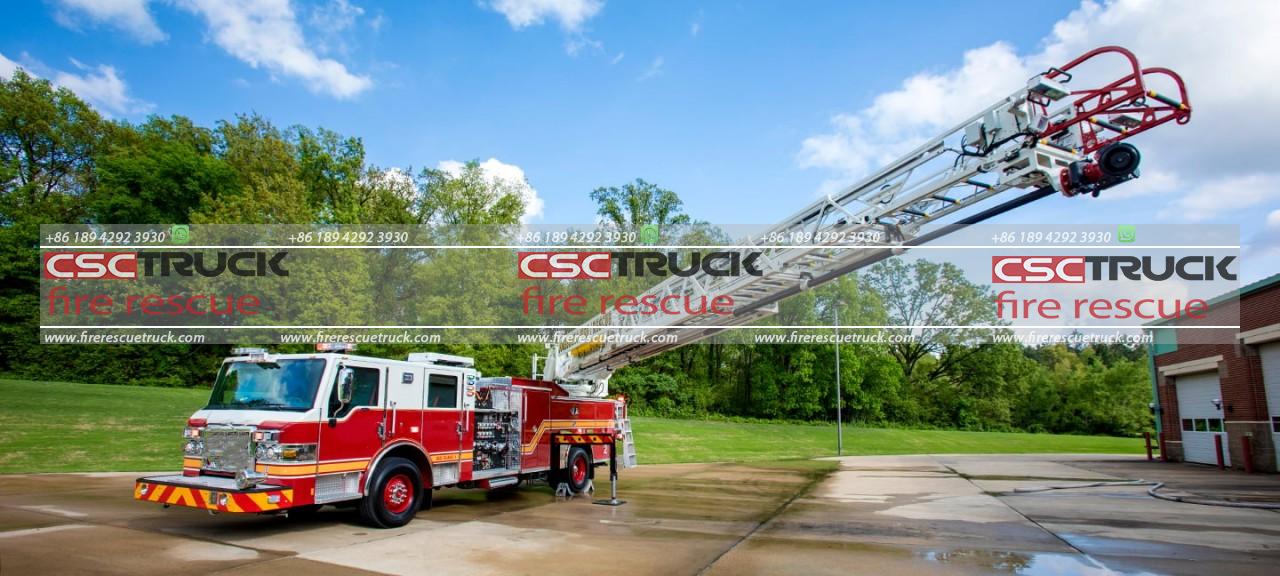
4. Stabilization System:
Stability is crucial when operating an aerials fire truck at significant heights. The vehicle must have a robust stabilization system to ensure it remains steady and secure during firefighting operations. This typically involves outriggers, which are extendable legs that provide additional support and balance to the truck. The outriggers should be adjustable to adapt to uneven terrain and provide a solid foundation for the aerial device.
5. Communication and Control Systems:
Effective communication and control systems are vital for coordination during high-rise firefighting. The fire truck should be equipped with advanced communication equipment, such as radios and intercom systems, to enable seamless communication between firefighters on the ground and those operating the aerial device. Additionally, the operator’s control panel should provide intuitive controls and real-time feedback on the status of the vehicle and its equipment.
6. Lighting and Visibility:
Fires in high-rise buildings often occur during nighttime or in low-light conditions. Therefore, an aerial fire truck should have powerful lighting systems to provide enhanced visibility for firefighters. These may include spotlights, floodlights, and strobe lights to illuminate the working area and make it easier to locate and rescue individuals trapped in the building. A 360-degree rotating spotlight on top of the aerial device can be particularly useful for scanning the surroundings.
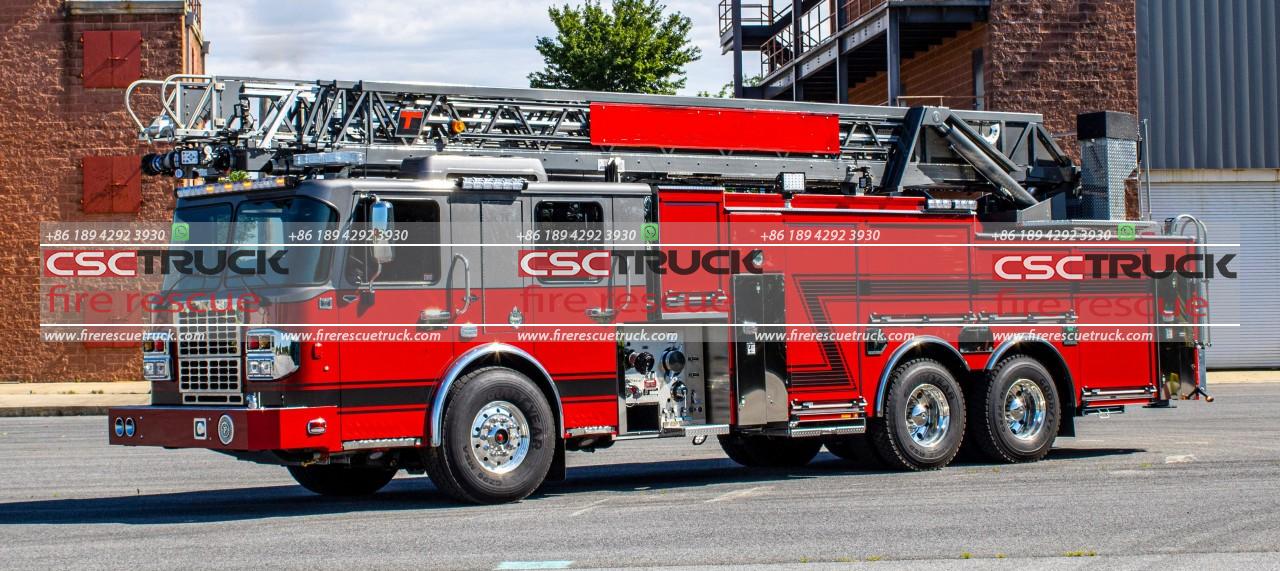
7. Equipment Storage:
An aerials fire truck should have ample storage space for essential firefighting equipment. This includes hoses, nozzles, breathing apparatus, rescue tools, and other necessary gear. The storage compartments should be well-organized, easily accessible, and equipped with securing mechanisms to prevent equipment from shifting during transportation.
8. Safety Features:
Safety should be a top priority when designing an aerial fire truck for high-rise firefighting. The vehicle should be equipped with various safety features, such as anti-skid surfaces, handrails, and safety harness attachment points, to ensure the well-being of firefighters operating at heights. Additionally, the truck should have built-in fire suppression systems, such as automatic fire extinguishing systems, to protect the vehicle and its occupants in the event of a fire or explosion. Fire-resistant materials and insulation should also be incorporated into the design to enhance the truck’s resistance to heat and flames.
9. Maneuverability:
Maneuverability is crucial when navigating through congested urban areas and positioning the aerials fire truck close to the building. The vehicle should have a compact design, a short turning radius, and excellent maneuvering capabilities to navigate narrow streets and tight corners. This allows firefighters to quickly and efficiently reach the scene of the fire, minimizing response time and maximizing their effectiveness.
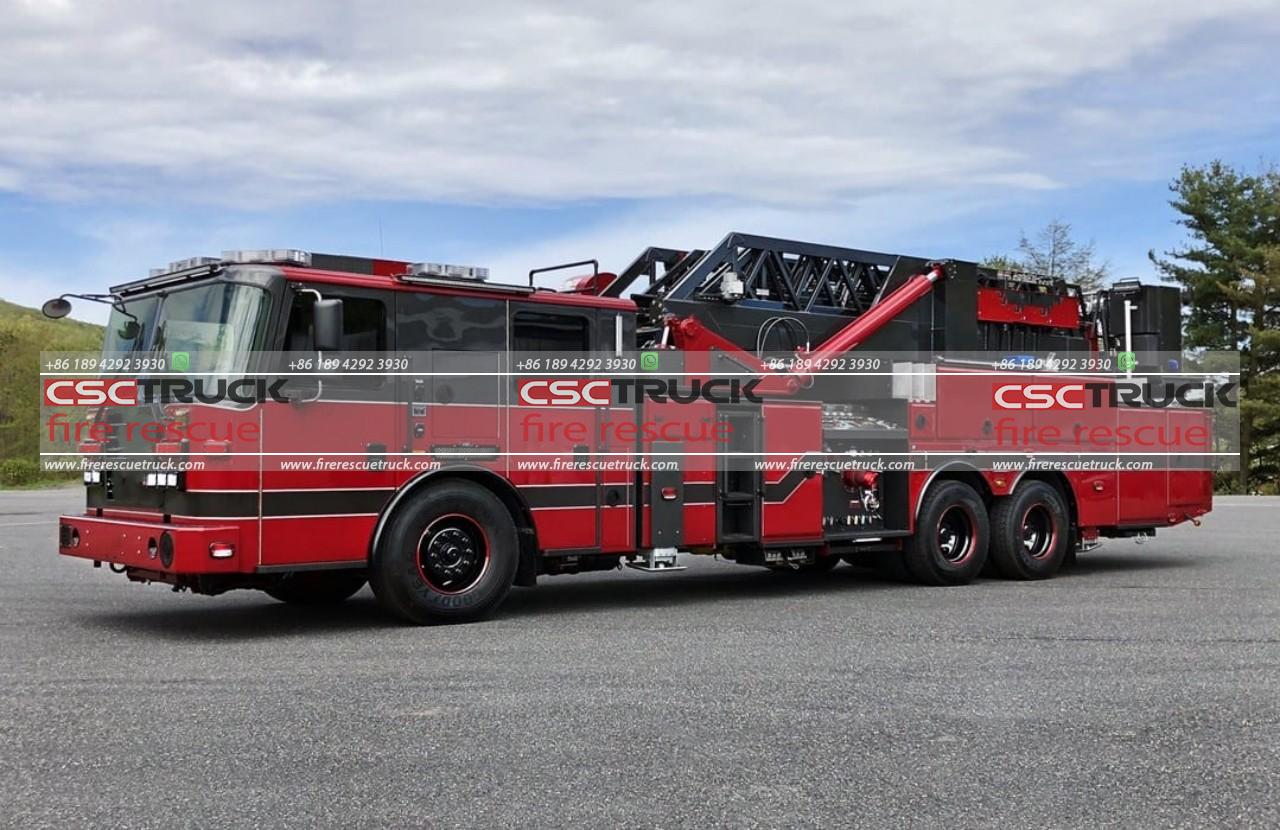
10. Enhanced Stability in Windy Conditions:
High-rise buildings are often exposed to strong winds at considerable heights. To ensure the stability of the aerials fire truck in such conditions, it should be equipped with features to mitigate the effects of wind. This may include aerodynamic design elements, wind-resistant materials, and advanced stabilization systems that can compensate for wind forces and maintain the truck’s stability during operations.
11. Thermal Imaging and Sensor Systems:
Thermal imaging and sensor systems play a crucial role in high-rise firefighting. These technologies can detect heat signatures, identify hotspots, and locate individuals within the building, even in low-visibility conditions. An aerial fire truck should be equipped with advanced thermal imaging cameras and sensor systems to aid firefighters in assessing the situation, locating the source of the fire, and identifying potential hazards.
12. Training and Simulations:
While not a physical feature of the truck itself, comprehensive training and simulations are essential for firefighters operating aerial fire trucks in high-rise firefighting scenarios. Training programs should be developed to familiarize firefighters with the specific features and operation of the vehicle, as well as the challenges and strategies involved in high-rise firefighting. Simulations can provide realistic scenarios for practice, allowing firefighters to hone their skills and improve their effectiveness in real-life situations.
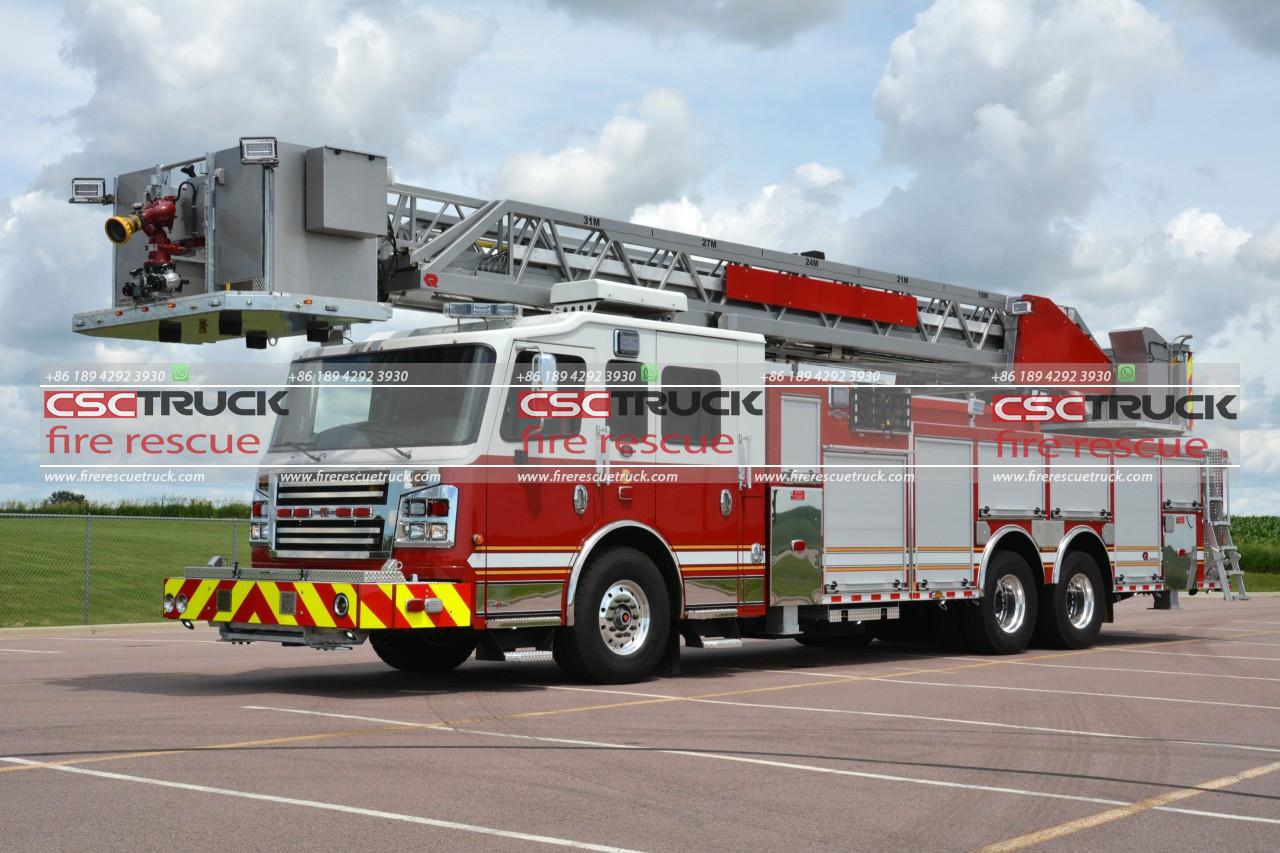
In conclusion, an aerial fire truck designed for high-rise firefighting requires a combination of specialized features and capabilities. The height and reach of the vehicle, coupled with an advanced water delivery system and aerial monitor, provide firefighters with the means to combat fires in tall buildings effectively. Stability, communication systems, lighting, and equipment storage are vital for efficient operations, while safety features and maneuverability ensure the well-being of firefighters. Additional features such as enhanced stability in windy conditions, thermal imaging, and sensor systems contribute to the overall effectiveness of the truck. By incorporating these essential features, aerial fire trucks can significantly enhance firefighting capabilities in high-rise buildings, ultimately saving lives and protecting property.



